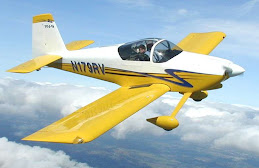Sun. 11th. 8hrs
Measured, cut and finished the HS908 attach angles. Match-drilled them to the forward spar.Started on the HS by assembling the skeleton and match-drilling the skin. Prepared the main nose and cap ribs
Friday was my son’s graduation ceremony (Mechanical Engineering – Trinity College Dublin) so no work on the plane. On Saturday, I just felt like a full day of goofing off and spent some time with my wife for a change. However, today I wanted to tackle this outstanding attach angle project. It went much better this time and I have two perfect attach angles to show for my efforts. I really need to get a finer Sharpie marker however. The so-called ‘fine’ tip is not really fine enough at all and the lines are not precise enough for my liking. It would be good to be able to use a metalwork scribe but that would be to invite stress fractures so its better not to have one in the shop.
 That completed the work in the HS up to primer stage. While I have the primer in stock, I don’t yet have the other elements organised for the priming job.
That completed the work in the HS up to primer stage. While I have the primer in stock, I don’t yet have the other elements organised for the priming job.So, being unable to move on to the assembly of the HS until priming is finished, I moved on to begin the preparation of parts for the next major structure; the Vertical Stabiliser. I believe I may prepare all the emp parts up to primer stage and do all the parts at the same time. This would mean setting up a spray booth just once.
The VS skeleton went together without problems. I thought about using the cradle blocks for the skin and then slipping the skeleton down inside. The manual is silent on how the skeleton should be wrapped. In the end, I just stood the skeleton on the bench and placed the skin over it and then just clecoed the skin on, beginning at the leading edge of the nose spars and working back. This seemed to work really well. It is in huge contrast to the complex assembly method that George Orndorff shows in his video. He was obviously dealing with an earlier kit in which the ribs were formed but not match-drilled. I would safely say that having the skin attachment holes on the rib flanges pre-punched saves at least two hours, if not four.
 I see from his website that Smitty used some 4in foam blocks between the clecos on the underside of his VS to hold it off the table while he match-drilled the top. I decided that the number of clecos involved would distribute the weight well enough. Besides, the clecos are all attached into ribs and/or spars, where there is a lot of structural strength, rather than free-floating skin. Also, the pressure applied to the drill in match-drilling existing pre-punched holes is very small. I was glad that I saved myself the effort of locating suitable foam as the results were perfect.
I see from his website that Smitty used some 4in foam blocks between the clecos on the underside of his VS to hold it off the table while he match-drilled the top. I decided that the number of clecos involved would distribute the weight well enough. Besides, the clecos are all attached into ribs and/or spars, where there is a lot of structural strength, rather than free-floating skin. Also, the pressure applied to the drill in match-drilling existing pre-punched holes is very small. I was glad that I saved myself the effort of locating suitable foam as the results were perfect.

No comments:
Post a Comment